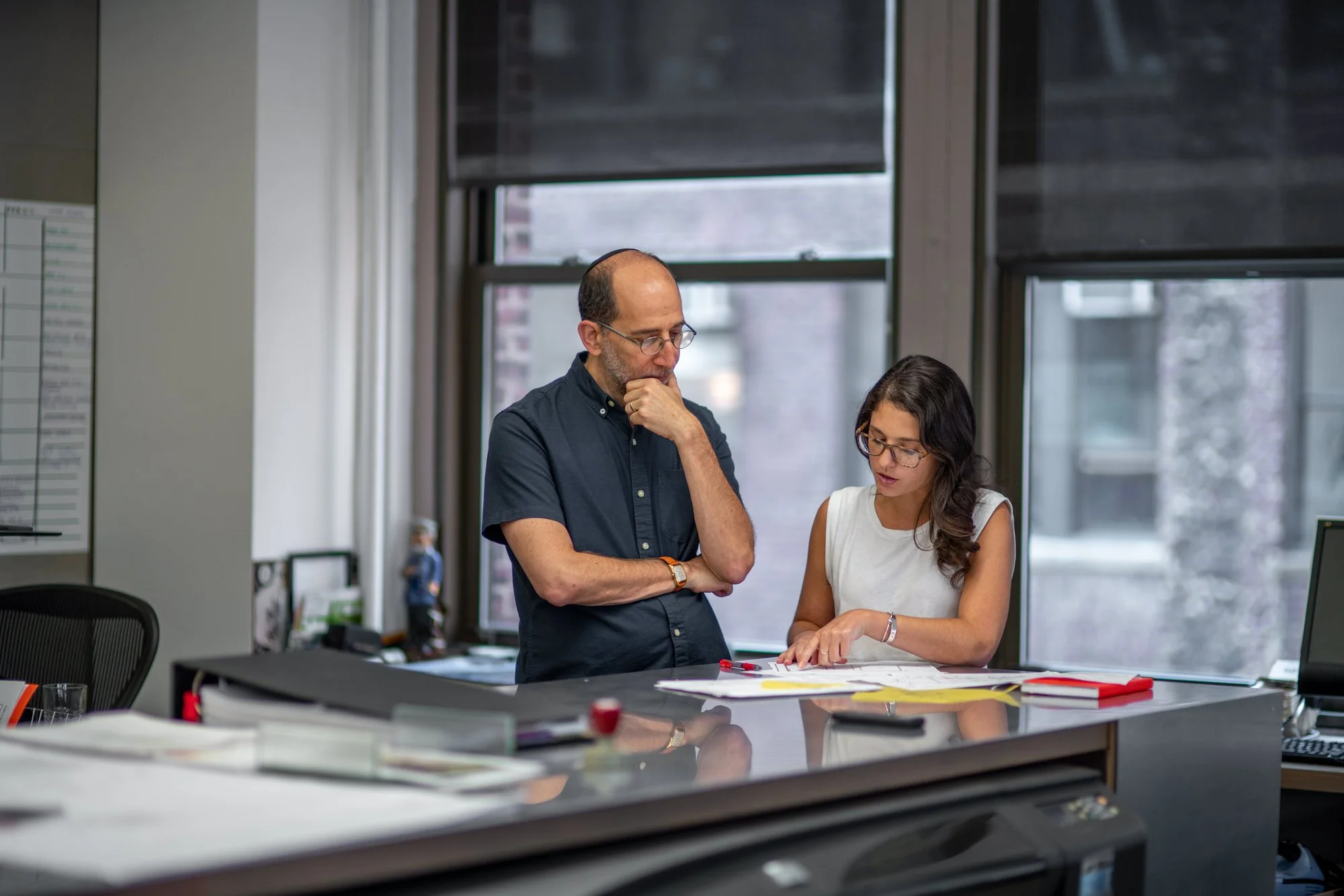AI can write my resume! …right?
Welcome back to Working Architecture, our blog about all things working in architecture!
If you missed our first chapter, go back and take a look. It’s really important to get clear on why you want to work in architecture in the first place.
So, now you know why you’re here!
Great! You now have your LinkedIn “About” section. Trim it for your Headline. This can also be used as a summary for the top of your resume. Speaking of your resume…
Your resume is not a list of what you have done, but a clearly sketched foundation for what you intend to do.
Read that again.
Your resume, can not and should not be a dry list of all the things you have (and have not) accomplished.
This is your opportunity to tell the story of how you have been pursuing your goals.
Let’s examine some key features of a successful resume
Design
If you were designing a building, you would use structure and light to direct the eye to a focal point. The same thing should happen with your resume. What is the highlight? What one thing do you NEED potential employers to see? Make sure that thing is somewhere towards the top of the page, but not the VERY top. About 20 – 30% of the way down is where our eye is going to land. Choose wisely.
White space
Give us breathing room so we can see what you are saying. Clutter is confusing. If there is too much content squished in with tiny font, we look away. The alternative is also true. If you do not have much experience, there are ways to share more information. We will get to that below. But whatever you do, do not give us multiple pages AND too much white space. A resume for beginners and even intermediate professionals is one page and one page only.
Experience
If you are just starting out, highlight your internships and your education. Make that the focal point. Were you a leader of a student group? Did you wow the boss at the internship in any way? Give us bullet points to help paint the picture of why you are valuable to an organization and how you grew while you were there.
Non-relevant jobs: This is really part of your experience, but a separate note is useful for non-relevant job experience. Working in hospitality, retail, and other industries is valuable experience where you may have learned transferable or soft skills that absolutely make you a great employee. That said, it looks weird if you list it on your resume right along with your architecture work. Try a separate section of “Skills” or “Other Experience” highlighting EXACTLY what those experiences taught you and why you are including this information.
ATS
Let’s face it, that first pass of your resume is likely to be done by a machine. This means you have to, at least in part, speak to the machine. Keep the font simple. Bold, italics and caps are all great options for formatting but lines and graphics tend to be confusing to software. They are also looking for keywords. List your software skills, write out your degree, keep it simple.
Stats
We need to know the location of each job, your job title, and the dates you were there. Do not expect us to have heard of your previous company or to look any information up ourselves. If the information is hard to find, we lose interest and move on.
Gaps
There is nothing wrong with gaps in your resume as long as you explain them. This does not mean offering personal information; especially if you do not want to! We are putting together a timeline of your life. Help us out. Examples:
spent two years parenting
took 6 months to attend to family
gap year included travel to x, y, and z countries where I learned to speak 4 languages, etc.
…You get the idea. Make it positive and interesting even if it was not. If that time was primarily spent searching for work, make it about education. How were you learning and expanding your skills during that time? You were doing that…weren’t you?
Personality
Think it’s not possible to show personality on a resume? Think again. An introductory statement can go a long way if it’s written well. Adding an interests section especially if those interests are artistic helps us get an idea of you as a person instead of just a pdf. Musical instruments, languages, woodworking, painting, etc
That was a lot!
Your resume is usually the first window in our exploration of who you are and if you could be a fit for an open position. Want more on resumes? Here are a few common questions.
-
Most employers are looking for indicators of professionalism and relevant experience but the key takeaway is that each company you apply to, is likely looking for something a little different. Some recruiters prioritize certain degrees or schools because they know a program is teaching the skills they need, others may be looking for job titles or to see candidates who have spent more than a year or two at one company. Don’t try to fit what you think they want. Focus instead on telling YOUR story to the best of your ability.
-
You likely can’t. Again, a resume is not to list every single thing you’ve ever done but to highlight the roles and tasks that are pointing towards where you want to go with your next position.
-
If you have NO internship, NO little summer job from high school and you’re still working towards your degree, put your extra-curricular activities. If you don’t have any, get some. Volunteer. Mentor a peer. Not to do something that “looks good on a resume” but to have some kind of experience that will help prepare you for actual work.

